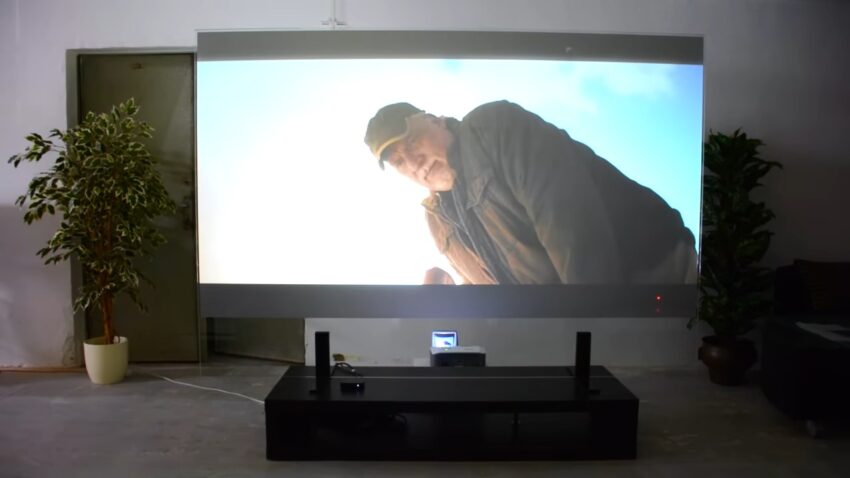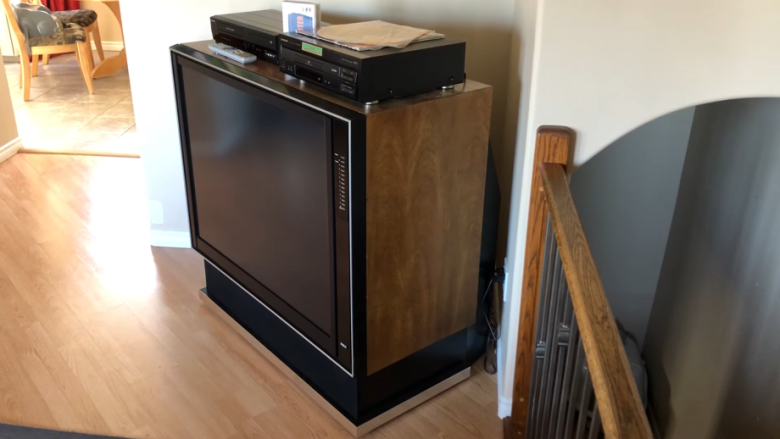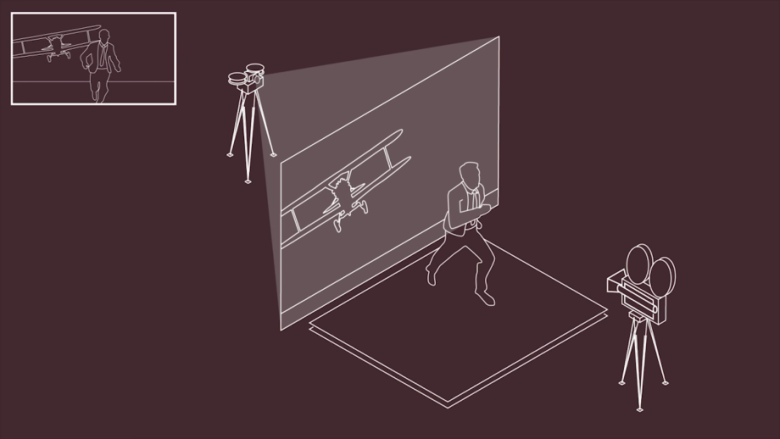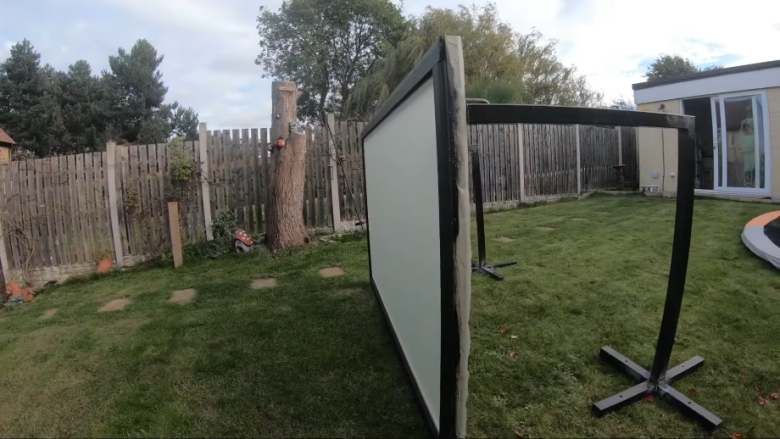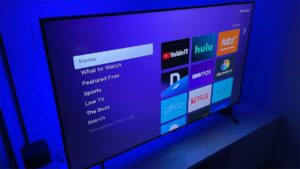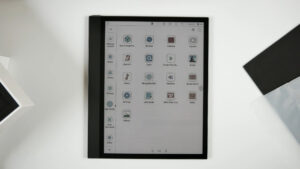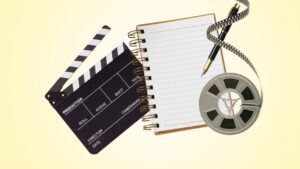Ah, the nostalgia! I remember the first time I laid eyes on a rear projection TV. It was massive, dominating the living room with its grandeur, and offering a viewing experience that was unparalleled at the time.
While flat screens and OLEDs might be all the rage now, there was a time when rear-projection TVs were the kings of home entertainment. I’ve spent years diving deep into the world of these technological marvels, understanding their mechanics, their evolution, and their unique charm.
If you’ve ever been curious about these giants of the past or are considering adding one to your vintage tech collection, you’re in for a treat.
Types of Rear – projection TV:
A projection television utilizes a projector to create a small picture or video from a video signal and enhance the size of the picture to a viewable screen. The projector utilizes a bright light source and a lens device to project the image on the screen to a much larger size.
In some cases, the set-up and configuration of the system are close to that of ordinary TVs. The projector is inside the TV box displays the picture from behind the screen.
The following are different types, which vary depending on the type of projector and how the picture is produced:
- CRT: Cathode ray tube is simple and basic technology. That is been for the case for these devices for most of their history. The primary advantage of CRTs is it is less expensive to manufacture and it can produce a wide range of colors. In fact, CRT’s can be configured for a wide range of resolutions.
Small cathode-ray tubes produce the picture in the same method as regular CRT tv does, i.e. by firing a beam of electrons onto a phosphor-coated screen and then projecting the image onto a large screen. Usually, 3 CRTs are used red, green, and blue, so that the colors match correctly on the projected image.
The main drawback of the CRT is: it is the oldest and basic traits of the technology. And it consumes more space because the size of the projector is large. The design is also not so attractive and it should be set up perfectly to get the best quality of the picture.
- LCD: The liquid crystal diode utilizes different technologies than CRT televisions. The LCD TVs utilize the powerful light sources which pass through the LCD chip consisting of video pixels, Which turn into the lens and then project the picture onto the screen.
By using the different technologies the LCD TVs deliver good picture quality. The contrast and brightness level in the LCD is also good. And it is a compact one which is portable, the power that is consumed to display the picture on the screen is also very low.
The major drawback of LCD technology is its design and production. The LCD chip is more expensive when compared to CRT technology. And also the LCD technology is mainly displayed for the pixels if even a single pixels get burn-out the picture displayed on the screen looks annoying and it gets a dot on the screen.
- DLP: Digital light processing uses the most advanced reflective mirror pixels to get high performance and the best quality of images. The DLP uses less power to project the picture on the screen. And it is compact and portable. The DLP chips also have the best projection performance of any of the current technologies.
A DLP projector creates an image using a DMD chip with a broad matrix of microscopic mirrors on its surface, each referring to one pixel in an image. Moreover, the DLP chip is expensive to manufacture at this time.
Advantages and limitations of Rear
What are the advantages and limitations of using the rear displays that should be factored in when considering the different options available to you? With the rear projection displays, the picture is projected to the viewer’s eyes with support from RPTV.
The main advantages of rear projection displays are that the lights in the room can be turned on when you’re watching a picture.
You can also expect outstanding picture brightness and excellent image quality when using this form of display technology. These screens often operate silently, which is a great advantage, especially when used for presentation or corporate purposes.
The drawback with the use of rear displays is many people consider the TVs used to be larger and heavier than flat-screen variants. If you’re using a rear projection TV, you’ll note that the light bulbs need to be changed every few years.
The front projectors are also considered to be easier to install and set up than the rear projectors.
What are the advantages?
Big picture: The rear-projection TVs come in different sizes from 40-80. The 42-inch models are more like large-screen displays and 60-80 inch models are mainly suitable for home theaters.
Low cost per inch: The rear-projection televisions are relatively low priced when compared to the plasma TVs. The individual who wants the best picture quality to be displayed on the screen should go for rear projection TVs instead of plasma TVs and LCD flat screens. Because when we think about the price point, TVs are affordable at the best prices than LCD or plasma TVs without differing sizes.
At present, 50 inches “high-resolution plasma TVs are valued around $6,000, while 50” rear projection televisions are offered for under $3,000. And if the 50 inches display is more enough for your room needs, you can even do it with a projector for less than $1,000 if you want it to appear on a wall.
Ease of installation: Rear-projection TVs are the easiest video system to set up, next to the ordinary TV. You should simply remove it from a crate, put it where you need, plug it in and turn it on. No drywall work is required. And the fact is that it is very lightweight and makes it much easier to set up.
Integrated audio: Most people are choosing the large screen display systems and they are choosing for the multi-speaker sounds that get better sounding when watching the TV. And by using the multi speakers or soundbars the systems perform well. However, it has a very decent sound on board. So you don’t have to move on a complete multi-channel audio system.
Ambient light: Rear projection television tend to perform relatively well with some background light in the room. In this aspect, the rear projection TVs are more flexible than the front projectors. But less supportive than the CRT televisions or flat-screen TVs, both of which look great regardless of the ambient light rate.
How about Limitations?
Limited viewing angles: Anyone familiar with big-screen TVs understands the feature of the image is dimming considerably when you move away from the center viewing angle. It occurs as you switch from one hand to the other, looking at the picture from gradually oblique angles. But it’s also very clear when you get off the axis horizontally. For this purpose, rear-projection TVs are ideally suited for viewers who can be seated right in front of the screen at eye level.
Physical space requirement: As mentioned above, the rear projection TVs have become much thinner than they used to be. So they take up less floor space. However, there are still huge boxes that require a significant portion of the wall or corner of the room. When compared with front projectors and flatscreen TVs, they are the bulkiest of the video arrangements available.
Reflections: It is natural for any light source to create glare at a similar angle to your viewing angle. Glare can seriously degrade the image quality. The only solution is to disable the harmful light source; in some situations. The condition will change if the display-saver is removed? Yet note that an unsafe screen is weak and costly to repair if it is destroyed.
FAQ
Are rear-projection TVs still being manufactured?
No, rear-projection TVs are no longer being manufactured. They have been replaced by other technologies such as plasma, LCD, and OLED displays. However, you may still find used or refurbished models available for purchase.
How long do the light bulbs in a rear-projection TV last?
The lifespan of the light bulbs in a rear-projection TV varies depending on the make and model of the TV and how often it is used. Generally, the bulbs can last anywhere from 1,500 to 8,000 hours. Some newer models use LED or laser light sources that can last even longer.
Can I use it for gaming?
Yes, you can use a rear-projection TV for gaming. However, the viewing angle and limited resolution of some models may not provide the best gaming experience. It is important to check the specifications of the TV to ensure it can support the resolution and refresh rate required for your gaming console or PC.
How do I clean the screen of a rear-projection TV?
Cleaning the screen of a rear-projection TV requires caution and special care. Use a soft, dry cloth or a microfiber cloth to wipe the screen gently. Do not use any harsh chemicals or abrasive materials as they may damage the screen or remove the anti-reflective coating. If necessary, you can use a small amount of water or a mild soap solution on the cloth.
Can I connect external speakers ?
Yes, you can connect external speakers to a rear-projection TV. Most models have audio output jacks or RCA connectors that can be used to connect external speakers or a soundbar. It is important to check the TV’s specifications to ensure it has the necessary audio outputs for your preferred audio setup.
Can I mount a rear-projection TV on the wall?
Rear-projection TVs are not designed to be mounted on the wall. They require a stable, flat surface to sit on and are typically quite heavy. Attempting to mount it on the wall could result in damage to the TV or injury to the person attempting the installation.
How do I troubleshoot ?
If you are experiencing issues with your rear-projection TV, the first step is to consult the user manual or online resources for troubleshooting tips.
Common issues may include a blurry or dim picture, color distortion, or audio problems. If the issue persists, you may need to contact a professional for repairs or consider replacing the TV.
The Bottom Line
From their inception to their peak popularity and eventual decline, rear projection TVs have had quite the journey. As I look back, I can’t help but feel a mix of nostalgia and admiration for these behemoths of the past.
They paved the way for the innovations we enjoy today and hold a special place in the annals of television history.
While they might not be the go-to choice for modern households, their legacy is undeniable. For those of us who had the pleasure of experiencing them in their prime, they’ll always be a cherished memory.
Related Posts:
- Portable Projectors in Action: Advantages and Applications
- Ultimate Guide to Get Better Viewing Angle Explained…
- 8K VS 4K and Upscaling Is 8K Worth the Upgrade? -…
- Local Dimming on TVs Explained - Ultimate Guide to…
- Ultimate Guide For Wall Mounting Your TV - DIY Journey
- VIZIO TV Troubles: Here's an Ultimate Fix-It Guide!


